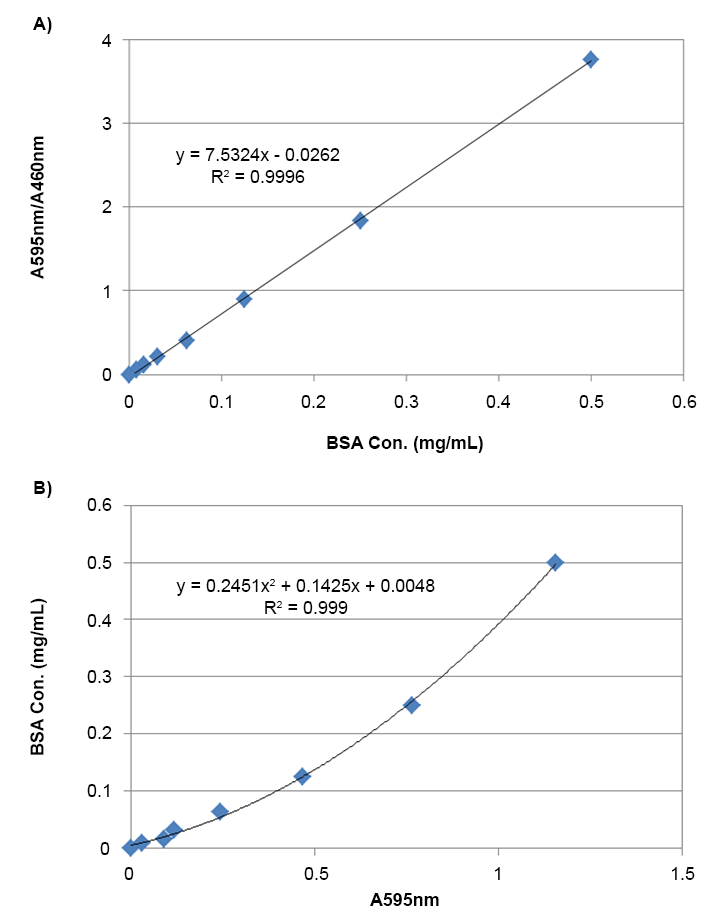Amplite® Colorimetric Bradford Protein Quantitation Assay Kit
Amplite® Colorimetric Bradford Protein Quantitation Assay Kit provides a reliable colorimetric method for quantifying total protein concentration using Coomassie brilliant blue dye.
- Visible detection: Measures absorbance at 595 nm with a clear color shift from brown to blue
- Extended dynamic range: 595/460 nm ratio expands linear detection range up to 10-fold
- Applications: Ideal for quantifying total protein in biochemical and cell-based assays
- Comparable alternative: Serves as a reliable substitute for Bio-Rad’s Bradford Protein Assay Kit


| Catalog | Size | Price | Quantity |
|---|---|---|---|
| 11118 | 1000 Tests | Price | |
| 11119 | 5000 Tests | Price |
Storage, safety and handling
| H-phrase | H303, H313, H333 |
| Hazard symbol | XN |
| Intended use | Research Use Only (RUO) |
| R-phrase | R20, R21, R22 |
| UNSPSC | 12171501 |
Instrument settings
| Absorbance microplate reader | |
| Absorbance | 595 nm, 460 nm |
| Recommended plate | Clear bottom |
Documents
Contact us
| Telephone | |
| Fax | |
| sales@aatbio.com | |
| International | See distributors |
| Bulk request | Inquire |
| Custom size | Inquire |
| Technical Support | Contact us |
| Request quotation | Request |
| Purchase order | Send to sales@aatbio.com |
| Shipping | Standard overnight for United States, inquire for international |
Page updated on January 31, 2025
